11 Other Benefits & Uses of Baking Soda bath
-
Author: Khushboo Kirale
- >> Post Created: April 25, 2022
- >> Last Updated: April 27, 2024
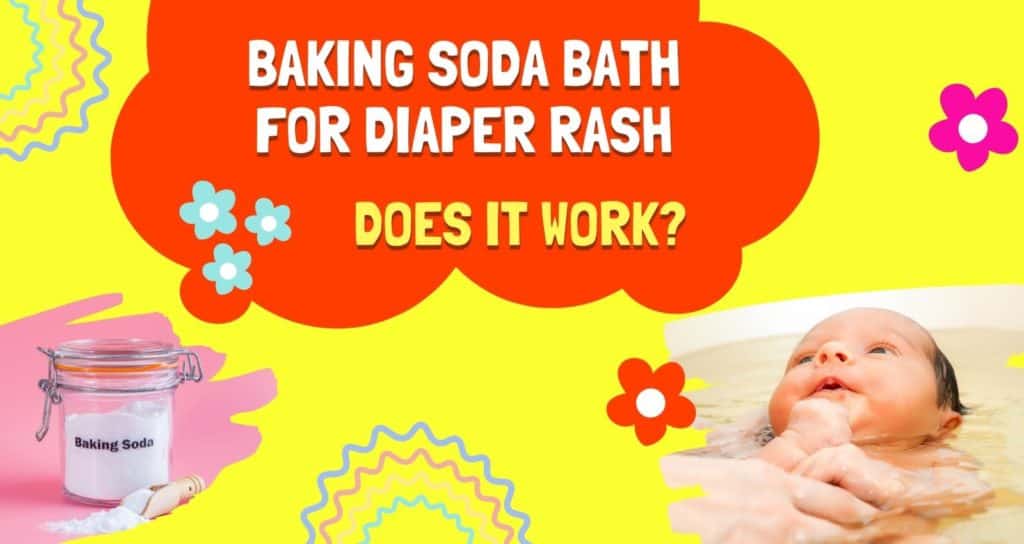
Baking soda bath for Diaper Rash - Table of Contents
A baby’s suffering of any kind can be absolutely heartbreaking! And the most common of them all, at least in the initial years, are diaper rashes. Therefore, many parents arm themselves with diaper rash creams to bring quick relief to their babies.
However, a baby’s skin is already so sensitive and with chafing or infrequently changed diapers, it suffers from a type of dermatitis — diaper rash — which then again is treated with chemical-loaded creams.
Many parents, therefore, prefer home remedies for diaper rashes.
While you are looking for natural remedies for diaper rashes, you may come across a common kitchen ingredient – baking soda – which has been found rather effective against those pesky diaper rashes – baking soda bath for diaper rash.
In this article, we will tell you why, when, and how can baking soda be used against diaper rashes and listed not only some very interesting uses of baking soda for diaper rash but also baking soda bath being used to treat some other skin related ailments as well.
About Baking Soda
The scientific name for baking soda is sodium bicarbonate, a mix of sodium and bicarbonate ions. Besides cooking, the qualities of this compound are time-tested when it comes to cleaning (used in many oral hygiene products, home cleaning, etc.).
As it also has the power to get rid of bacteria, fungus, bad odor, etc., it is useful when it comes to treat certain skin issues as well. When used in the right quantity and mix, it is safe to use on the skin. It is also hypoallergenic, that’s another added advantage!
Therefore, when it comes to babies, a baking soda bath for diaper rashes or even using baking soda paste for diaper rash is safe and effective, without any worries about adverse side effects.
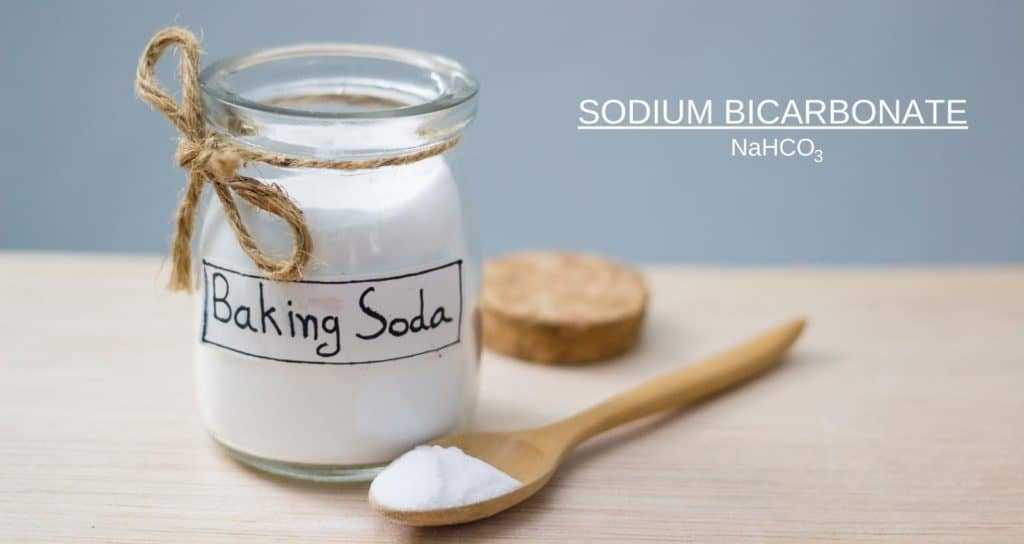
Baking Soda for diaper rash – How does baking soda work on diaper rashes?
There are good reasons why a baking soda bath for diaper rash has worked over time.
- Antibacterial and antifungal properties: Diaper rashes are mostly either a fungal infection or bacterial, and baking soda attacks both, making it an ideal home remedy for diaper rashes.
- Relieves itching: Diaper rashes are a kind of dermatitis, which are not only uncomfortable, but also itchy. Baking soda also has anti-pruritus effects, which rescues your baby from itching.
- Maintains skin’s pH balance: When a baking soda bath is used for diaper rashes, it also restores the baby’s skin’s pH balance, which in turn brings down the inflammation caused by the skin condition.
How is Baking Soda used to treat diaper rashes?
Different ways to use baking soda for diaper rash(es) apart from baking soda bath for diaper rash!
Most diaper rashes are caused due to warm, moist, and damp conditions because of prolonged use of the same diaper or because of the frequent friction between the baby’s skin and the diaper. And baking soda can come to the rescue in both the cases.
Baking soda is natural and hypoallergenic, but we still recommend a skin test before using it on your baby’s diaper rash. For this, make a small amount of baking soda paste and apply it on a small part of the baby’s unaffected skin and observe for 24 hours. If the skin remains fine and there is no swelling or irritation, then you can go ahead and let baking soda relieve your baby from diaper rashes.
There are four methods in which you can use baking soda to effectively work on your baby’s diaper rash.
Baking Soda paste:
Mix two tablespoons of baking soda with one tablespoon of water until you get a soft paste.
Apply this baking soda paste to the affected area after cleaning it properly.
Let it stay on the skin for 15 minutes before rinsing it off. Then gently pat dry the skin there and put on a diaper.
Make just enough for one-time application, as any extra paste will dry out soon.
Do this once a week until the diaper rash goes away.
Baking Soda bath for diaper rash:
This is yet another gentle way to get rid of the bacteria and germs that are causing your baby’s diaper rashes.
For a baking soda bath, take the required amount of lukewarm water sufficient enough to submerge your child’s bottom completely.
Then add 2-3 tablespoons of baking soda into this lukewarm water.
Once it dissolves completely, put your baby in this water and let the affected area soak well for about 10-15 minutes.
You can do this every day for 1-2 weeks till the rashes go away.
After this, pat dry the affected region and apply an organic baby moisturizer – like coconut oil.
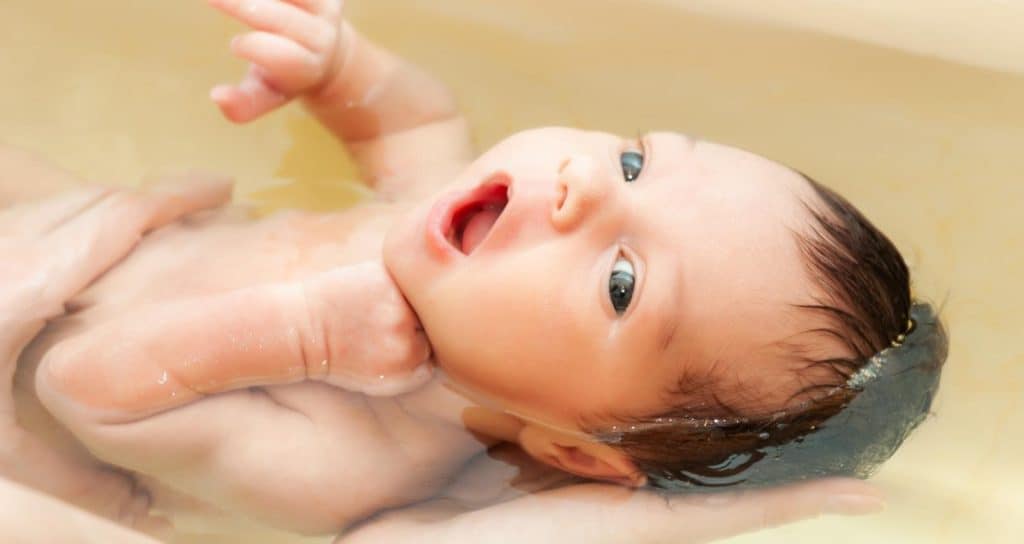
Baking soda and Yogurt:
For a stronger, but natural treatment of diaper rashes, you can mix baking soda and Greek yogurt (which also has anti-bacterial properties) in equal quantities (One spoon Baking soda + one spoon yogurt).
Use this paste – very thin layer – on the rashes after you wash your baby’s bottom every time when changing diapers.
Rinse off with cool water then and pat dry.
You can continue to do this for about two weeks.
Baking soda, milk, and honey – bath for diaper rash:
This combination enhances the effectiveness of baking soda against diaper rash.
For this, add half a tablespoon of honey, one cup milk, and a tablespoon of baking soda in warm bath water for your baby.
Let the baby sit in this water for 10-15 minutes before rinsing the skin and patting it dry.
You can do this once a day till the rash vanishes.
IMPORTANT NOTE
Baking soda is an effective compound to use, even on the sensitive skin of a baby. However, you need to keep the following in mind –
- Baking soda is not baking powder
- Avoid using it for a prolonged period
- Initially, use small amounts and use it only topically on your baby
- Ensure you are using a highly diluted bath with baking soda
- Doctors do not recommend using baking soda for babies below 6 months of age, as their skin does not develop a complete barrier till then
- Even after that, talk to your doctor about using baking soda for diaper rash, if you have doubts
After using any of the baking soda treatments, you should moisturize the affected area with organic baby moisturizer. Alternatively, you can also use coconut oil, aloe vera or zinc oxide ointment every time you clean and change the baby’s diaper as a moisture barrier to minimize the skin irritation when they urinate or defecate.
11 Other benefits of Baking soda bath
Besides diaper rash, baking soda can be used to treat other skin and health issues as well.
1. Baking soda bath for Chickenpox
Chickenpox is infamous for the itching and irritation it causes to the skin.
A warm baking soda bath can bring great amount of relief to the skin, for babies as well as young kids.
Mix 1-2 cups of baking soda in lukewarm water and soak in it for 10-20 minutes.
Applying this method three times a day can yield good results.
2. Yeast Infections
Yeast infections can cause itching and swelling and a baking soda bath can help reduce the discomfort in this case.
Be it a yeast diaper rash or a yeast infection in babies or older children.
Studies have shown that baking soda bath or paste is effective in killing Candida cells that cause yeast infections.
3. Psoriasis
Psoriasis’ symptoms include itchiness and inflammation of the skin both in babies and adults.
Oatmeal baths are recommended for relief from these symptoms.
However, adding 1.5 cups of baking soda to an oatmeal bath of 13-14 liters of water can make this method even more effective on the troubled skin.
For a baby suffering from these symptoms, soaking in the bath for some time or applying the solution on the affected area using a washcloth can help.
After this, ensure that you use an organic moisturizer on the skin.
Read this next
4. Eczema
Eczema troubles the skin through dryness, itchiness, inflammation, and botched skin patches.
The seasonal outbreak of this condition can be extremely agonizing for babies, as the extreme itchiness will make the baby scratch the affected area and break the skin barrier, causing more pain and open small wounds prone to infection.
The properties of baking soda can make it a boon for Eczema skin conditions, as it can not only stop the flare-up, but also act quickly to reduce the irritation.
Mix ¼ to ½ cup of baking soda to the baby’s warm bath and soak your baby in it to soothe the skin – making a baking soda bath.
As babies with Eczema need extra skin care, ensure you moisturize the skin with an organic moisturizer after bath.
5. Nail infections, other fungal skin issues
Various types of fungal strains may infect nails and skin of babies and the antifungal baking soda bath is the cure you need here.
For fungus-infected nails, soak your or your baby’s nails in a baking soda mixture regularly. It is natural, hypoallergenic remedy, which won’t harm the baby, as they are used to putting their fingers and nails in the mouth.
We of course, still recommend you see a doctor; soaking nails in baking soda mixture can only prevent the infection from spreading further and provide immediate relief to the baby.
6. Urinary Tract Infection (UTI)
This condition causes burning sensation on urination and is caused by added acidity in the urinary tract.
Both – adults and babies – suffer from this, but the chances of babies having this condition is bigger as they are wearing diapers all the time.
Soaking your baby in baking soda baths can help lessen the pain and discomfort.
Add 1/4th cup baking soda in the baby’s bath and let them sit in it for 15-20 mins.
Pat dry and add any organic moisturizer.
7. Vulva irritation
Some women usually suffer from itching and irritation around the vulva.
Adding 1/4th cup to a bath and soaking in it for 15-20 mins 2-3 times a day can help relieve and lessen the symptoms.
8. Constipation
Babies often suffer from constipation.
A baking soda bath can help them relax, which allows the stool to pass easier.
However, always consult your baby’s doctor to know the exact cause behind the constipation – diet, hydration levels, nutritional intake, etc.
In grown-ups too, baking soda can help ease the itching and pain caused by constipation and hemorrhoids.
9. Poison Ivy, sumac, or poison oak
Baking soda bath can also work wonders on rashes caused by touching some poisonous plants.
Baking soda bath not only reduces swelling and itching, but also prevents the skin from absorbing oils that can lead to further rashes. You can also add oatmeal to the baking soda bath.
10. Baking soda bath Cleanses sensitive skin
Baking soda is alkaline in nature, a hypoallergenic with antifungal and antibacterial properties, which makes it a good option to clean your baby’s sensitive, inflamed skin without resorting to harsh soaps or scrubbing.
11. Detox Baths
For grown-ups, baking soda can be an excellent addition to the bathwater for detoxification – baking soda bath.
To prepare a detox bath, add ½ cup baking soda, ½ cup Epsom salts to warm bathwater.
You may also want to add other medicinal herbs or essential oils to help the body sweat and detox.
For adults, it is recommended to gently exfoliate skin with a loofah or a body brush to make a baking soda bath more effective.
Add ¼ cup to 2 cups of baking soda, depending on the amount of water you use for bath.
Soak in the tub for about 40 mins.
After this, pat dry the skin and use a natural oil/lotion to moisturize the skin.
Baking Soda: Risks and considerations
Generally baking soda baths and using baking soda for diaper rash is safe.
However, as dissolved baking soda can be absorbed into the skin, people who fall into the following groups should avoid it –
- Have high blood pressure
- Have diabetes
- Are pregnant or are nursing mothers
- Have serious infections or open wounds
- Are prone to fainting
- Are allergic to baking soda
- Are currently using alcohol or drugs
It is also recommended for everyone to do a small patch test on the skin 24 hours prior to taking a baking soda bath to check for side effects, if any.
Key takeaway
Baking soda is a kitchen ingredient that works beyond the kitchen – for diaper rashes, teeth whitening, skin exfoliation, foot soak, dry scalp relief, in oral hygiene products and as a deodorant.
When it comes specifically to diaper rashes or other skin-related issues that cause pain, itchiness, or inflammation, baking soda bath is an effective way to get relief.
The addition of baking soda in water increases the water’s healing ability to soothe muscles and skin.
So, a baking soda bath for diaper rash is not the only use. There are many ways you can use the baking soda bath for addressing various problems not only in kids but also in adults.
If a baking soda bath for diaper rash is not giving the required results, then we recommend you apply baking soda paste on the affected region for a faster healing process.
Of course, you can talk to your doctor before using it on your baby if you are still skeptical about trying the baking soda bath for diaper rash for your baby.
Happy diapering!
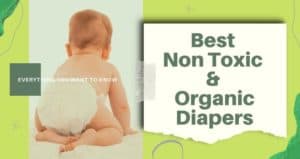
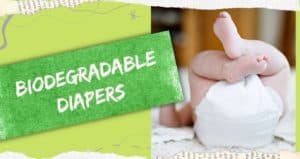
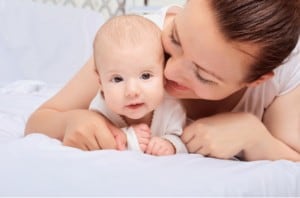

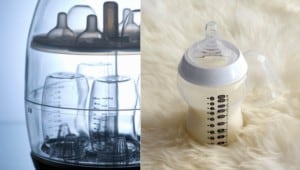
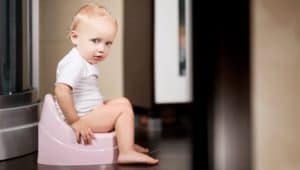

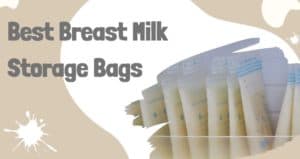


I think we unnecessary spend on pharmaceuticals before even try such home remedies.
Thanks for the suggestion. Nice post.
Hi Callie,
For such minor things there are a lot of home remedies available. If these don’t work out you should definitely visit a doctor.
Thanks for visiting our blog.
I am glad I found your site as I was looking on Yahoo for diaper rash remedies.
Wonderful blog (I also liked the theme/design), I don’t have time to read it all at the minute but I have saved it and also added in your RSS feeds, so when I have time I will be back to read much more,
Please do keep up the excellent work.
Thanks Bonnie for the sweet words.